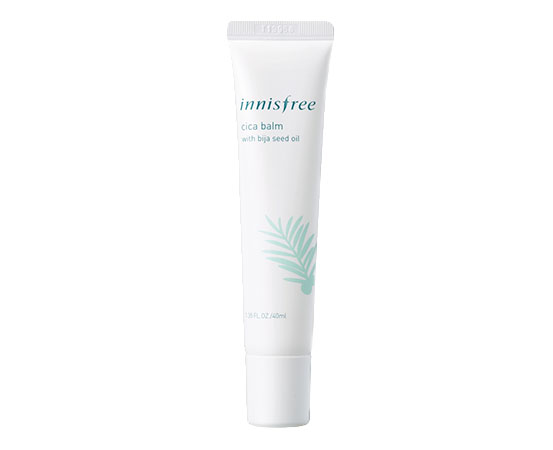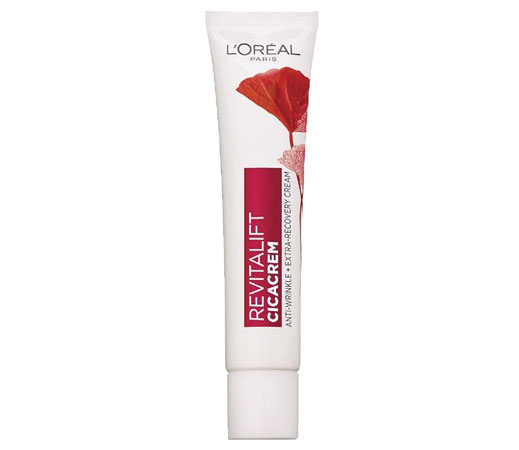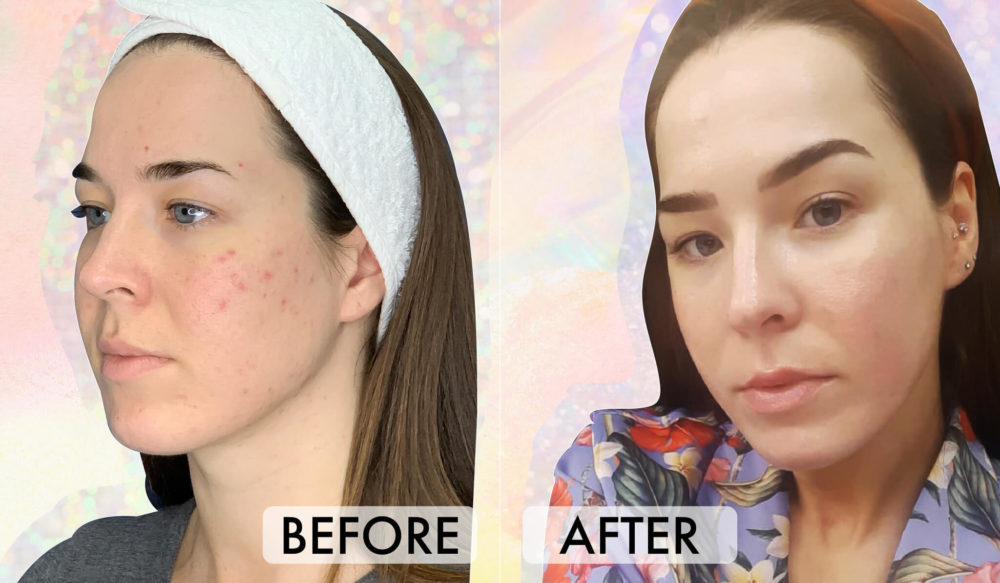Cica Is The Ingredient You Need To Add To Your Routine
 via Giphy
via Giphy
Forget cucumber and aloe for a sec. Cica is arguably one of the most calming skincare ingredients we know of, and it has brands, and customers legit stoked on its healing, soothing powers. Its full name is Centella Asiatica, but because everyone and everything needs a proper nickname, the skincare community has taken to calling it Cica for short. With expert insight, we’re breaking down what Cica is and how it makes angry skin happy. We’re also dishing suggestions for Cica-infused products that are 100% worth your money.
The 411 on Cica
Though Cica has only recently received an influx of heart-eye emojis from the beauty community, it actually has a long and notable history in skincare.
“Centella Asiatica, or Cica, is a herb that has been incorporated into medicine and skincare since ancient times. Most of us are more familiar with some of its other names, such as Gotu Kola and tiger grass,” says Melissa Lekus, a licensed esthetician based in Los Angeles. “This ingredient is used to decrease inflammation and soothe compromised skin. It also aids in wound healing — [including cuts, scrapes, stretch marks, and parched or damaged skin] — and is known to increase collagen production.”
 Source: Arunsri Futemwong/ Shutterstock
Source: Arunsri Futemwong/ Shutterstock
Historically, Cica has been one of those ingredients — like hyaluronic acid, vitamin E, and certain botanical extracts — that’s quietly found in many products but otherwise goes unnoticed. However, over the last year or so, it’s been getting the hype it deserves.
Who is Cica Good For?
Because Cica is such a soothing and calming skincare ingredient, it’s especially key for people who want to nourish, hydrate, and heal their damaged skin.
Interestingly, K-Beauty has really embraced Cica in recent years because of how well it counteracts the effects of environmental pollutants. The tiny peninsula is plagued with a weird meteorological phenomenon called “yellow dust” or “Asian dust” that wreaks havoc on skin, so Cica has become very important there.
You don’t have to deal with yellow dust to use Cica, though. If you deal with dry climates, city pollutants, sunburns, windburns, or irritated skin, then Cica is an excellent ingredient to incorporate into your regimen. Also, since it stimulates collagen production, it helps with firming. For that reason, you’ll find it in a ton of anti-aging products, as well.
One thing Lekus noted is that Cica is often incorporated into really rich products – think heavy creams and ointments. If you have very oily or acne-prone skin, she recommends avoiding this ingredient, using it sparingly, or using sophisticated formulations that are much lighter.
Try Cica Yourself With These Skincare Products
If you’re ready to give Cica a go, start with one of these products that put the ingredient in the limelight:
 Source: Dr. Jart
Source: Dr. Jart
Dr. Jart+ CicaPair Tiger Grass Cream, $48, is a thick ointment that’s basically a savior to irritated and inflamed skin. In addition to Cica, it contains a blend of healing herbs and nourishing minerals that boost moisture levels for a rejuvenated and hydrated complexion. The ingredients also work together to strengthen your skin’s barrier function, which means it’s less susceptible to future damage. Dr. Jart+ actually has an entire CicaPair line that’s worth checking out.
 Source: Innisfree
Source: Innisfree
For a lighter formulation, try Innisfree’s Cica Balm with Bija Seed Oil, $24. This is a delicate, gel-based balm that combines Cica with the Bija fruit, an ingredient that’s also recommended for stressed skin. The brand refers to this ingredient duo as a “power couple,” and the product helps nourish, strengthen, and improve overall tone and texture. Because it’s not super heavy, it’s a great option for those with acne-prone skin who want to try Cica.
 Source: L’oreal
Source: L’oreal
L’Oréal Revitalift Cicacream Anti-Wrinkle + Skin Barrier Repair, $18, is an anti-aging, skin-bolstering product with a non-intimidating price tag. It harnesses the power of Cica to calm and heal skin that’s been compromised, and also contains pro-retinol to soften signs of aging. We recommend this one to anyone who’s on an anti-aging mission (late 20s and up, probs) and doesn’t want to drop a fortune on one cream.
Have Cica questions? We’ve got Cica answers. Hit us up in the comment section below, and we’ll get back to you right away.























Leave a comment